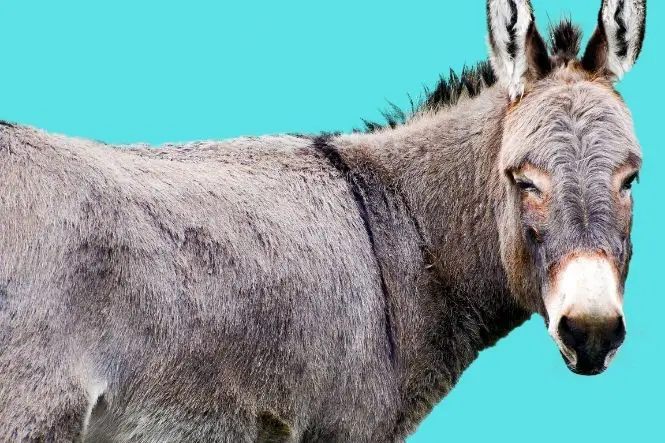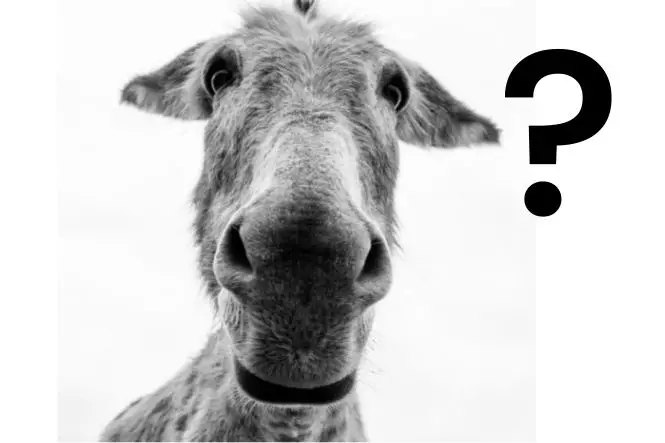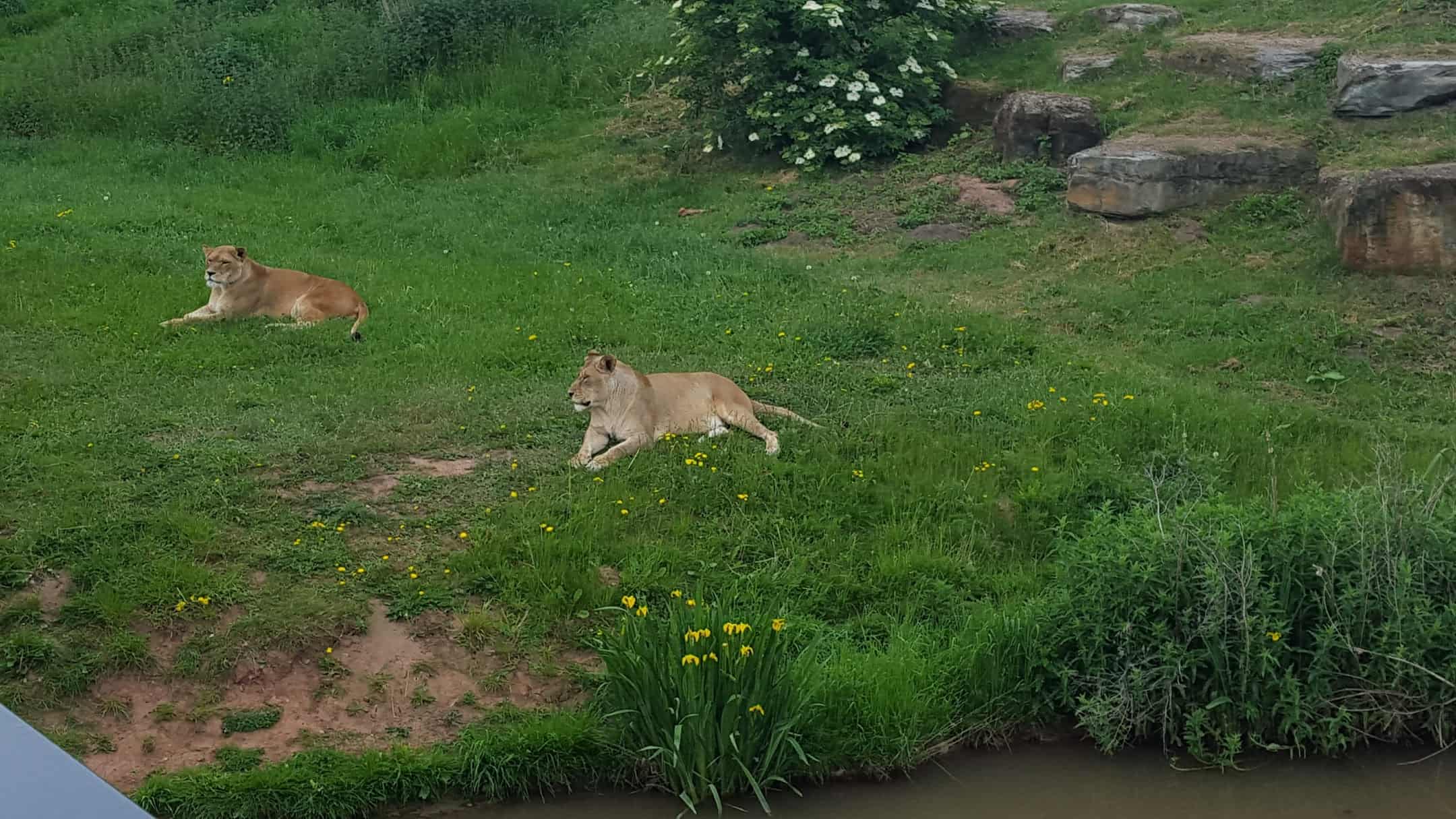Donkeys are commonly found in many parts of the world, where they are typically used as pack animals or for other work in several countries. These mammals come from the Equidae family and are similar in many ways to horses and zebras. Donkeys have an unmistakable cross on their backs that has both scientific reasons and religious symbolism.
The first line of the cross on the donkey’s back begins at the mane of the animal and continues along the spine, down to the tail. The second line of the cross goes from one shoulder to the other, intersecting the first line and forming the shape of a cross. The hair of the cross is usually a different color than the rest of the hair on the animal, most often darker so that it is easily seen.
Markings on animals, such as stripes, spots, or other patterns, are most commonly related to camouflage and being able to stay hidden in the wild. For example, an animal may have markings that allow it to blend into the trees and help it hide from any predators that are hunting it. Similarly, some animals use their distinctive markings to blend into their surroundings which allows them to sneak up on their prey. Since wild donkeys are herbivores and don’t hunt other animals, their markings most likely helped them to hide from predators in the wild.
Table of Contents
What Does The Cross On A Donkey’s Back Mean?
The cross on a donkey’s back has different meanings depending on whether you are seeking a scientific reason or a spiritual symbolism for the marking. Scientists who study animal biology and the evolution of different species suggest that the cross on a donkey’s back relates to genetics. Religious people, particularly those of the Christian faith, provide an interpretation of the donkey’s cross that relates to the story of Jesus and his crucifixion.
According to some animal researchers, donkeys have a cross on their back because they evolved from an early ancestor that had similar markings. Scientists often make a comparison to zebras, which share some genetic history with the donkey, and their prominently striped coats. The reason for the cross is unclear, however, some researchers believe that it may have played a role in providing some degree of camouflage to donkeys in the wild.
Some Christians tell a story of the donkey who was present on the day that Jesus was crucified on the cross. This donkey had attempted to help Jesus but was unable to do so because of the crowd. The sun began to set while the donkey was standing behind Jesus on the cross and the shadow of the cross fell upon the donkey’s back, leaving a mark.
Do All Donkeys Have A Cross On The Back?
There are dozens of types of donkeys in the world and almost all of them have a cross along their spine and shoulders. One notable exception is the critically endangered Somali donkey, which is found in Somali, Kenya, Yemen, Ethiopia, Eritrea, and Djibouti. While some donkeys may not appear to have a cross on their back, it may just be difficult to see because of the color of the hair or the cross.
The Somali donkey and the Nubian donkey are two subspecies of the African wild donkey. The three major differences are that the Somali donkey does not have the cross on its back, it has gray and white stripes on its legs, and it has smaller ears. Scientists are not sure why this breed of donkey does not have the cross on its back when so many other types do.
The cross on a donkey’s back is usually visible, however, this depends on the color of its hair. For example, a dark cross is easier to see on a donkey that has light-colored fur, whereas it can be challenging to see the cross on a donkey that has very dark fur. Also, the image of the cross on the donkey’s back can sometimes fade as the donkey ages–if you are unable to see a cross, it may be that the donkey is older.
Is A Donkey The Only Animal With A Cross On Its Back?
While there are plenty of animals with various stripes and patterns on their coats, the donkey is the only animal in the world that features a cross on its back. Even animals that are a cross of a donkey and another animal don’t usually have the cross on their back. Some believe that there is a scientific reason that only the donkey has this feature, while others think it is a sign of devotion and holiness.
When a male donkey is bred with a female horse to create a mule, these animals no longer have a cross on their backs. Similarly, breeding a female donkey with a male horse to get a hinny also results in a lack of the cross feature. The reason that the cross does not appear after a donkey is bred with another animal likely has to do with the genetic makeup of the new animal.
Scientists think that the donkey is the only animal to have the cross on its back because it once provided a benefit for the animal, likely in the form of camouflage. Other animals had different markings and patterns that also offered them an advantage in the wild. Some Christians believe that the reason only the donkey has a cross on its back is that it is a sign of the animal’s devotion to Jesus on the day of his crucifixion.
Are Donkeys Born With A Cross On Their Back?
Other than the Somali donkey which doesn’t have a cross on its back at any point in its life, other donkeys are born with a cross. While the cross may fade over time as the donkey gets older, it is always present from birth until death. The color of the cross varies depending on the donkey’s hair.
While some animals do not develop their distinctive marking until later in life, the donkey has a noticeable cross on its back from the time it is born. Though the cross does not seem to offer any benefit to domesticated donkeys, it may still provide camouflage to animals in the wild. Thus, it is important that donkeys have this benefit right from the time they are young to help protect them from predators.
A newborn donkey with black hair may appear as though it is missing the cross on its back. This is because the color of its hair is so dark that the cross is not yet visible. However, if the hair of the donkey was to be shaved, you would be able to see the shape of the cross on the donkey’s skin.

Final Thoughts
The shape of the cross on a donkey’s back means different things to different people. Religious believers and researchers each have their own ideas about where the cross came from and what it represents. Regardless of the origins of the cross, it is unique in that the donkey is the only animal in all of the world to have this marking.





